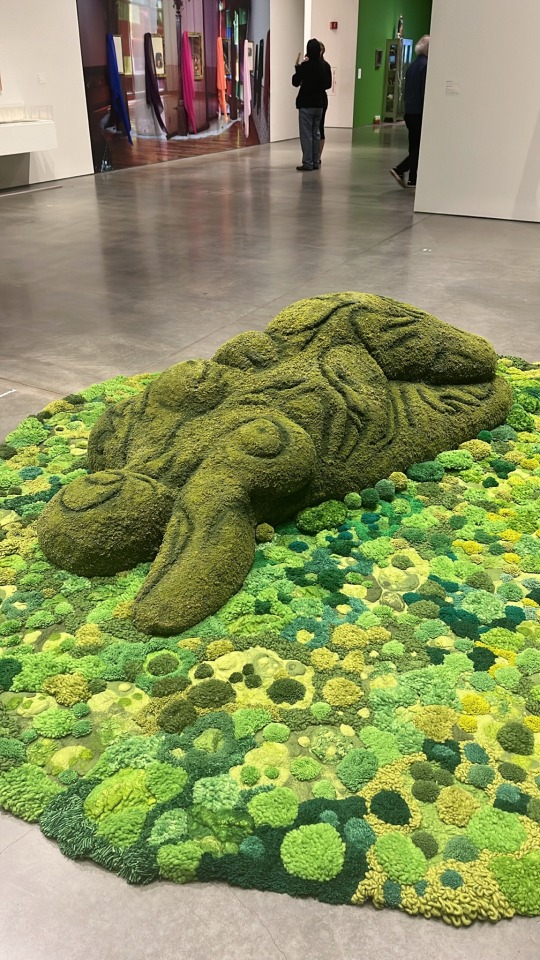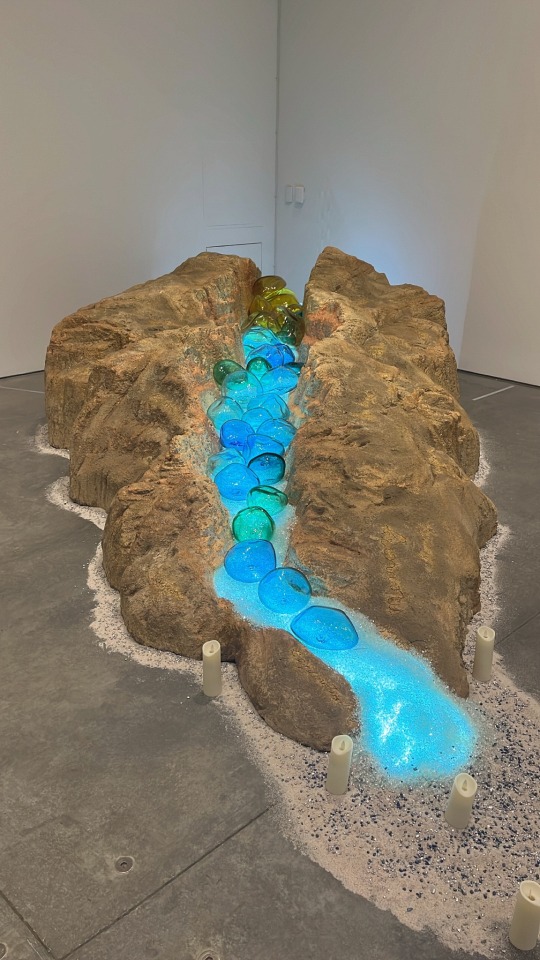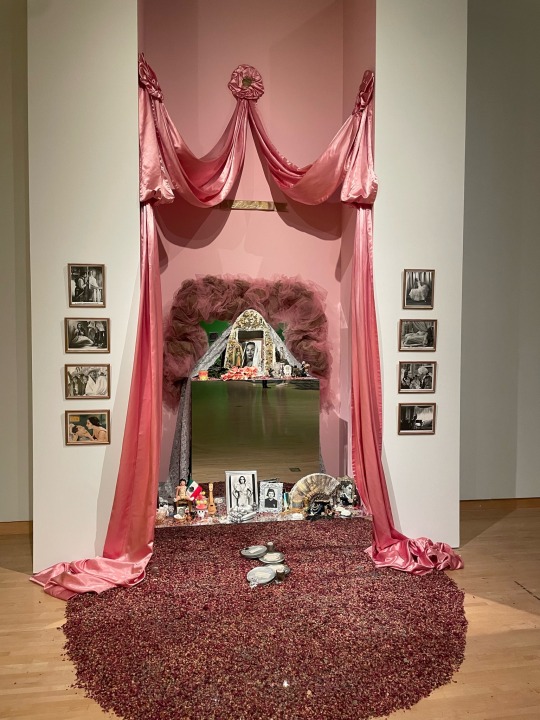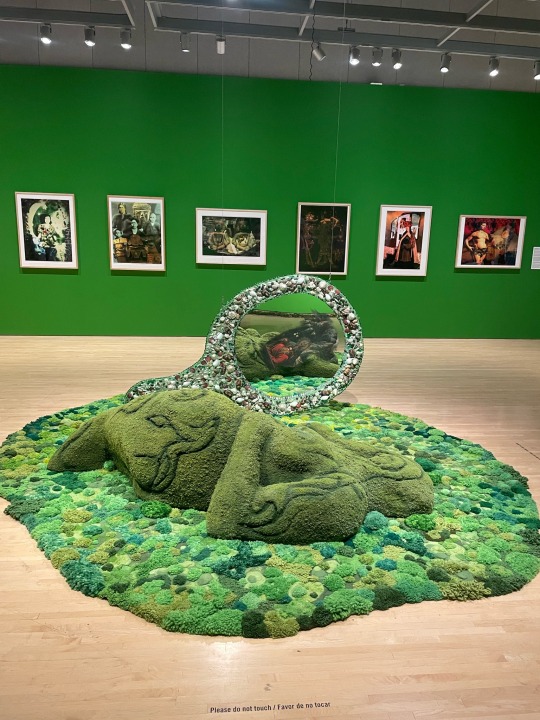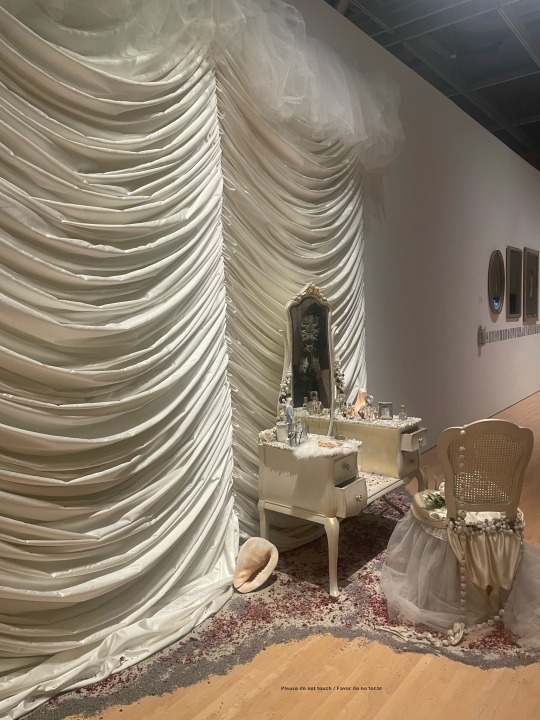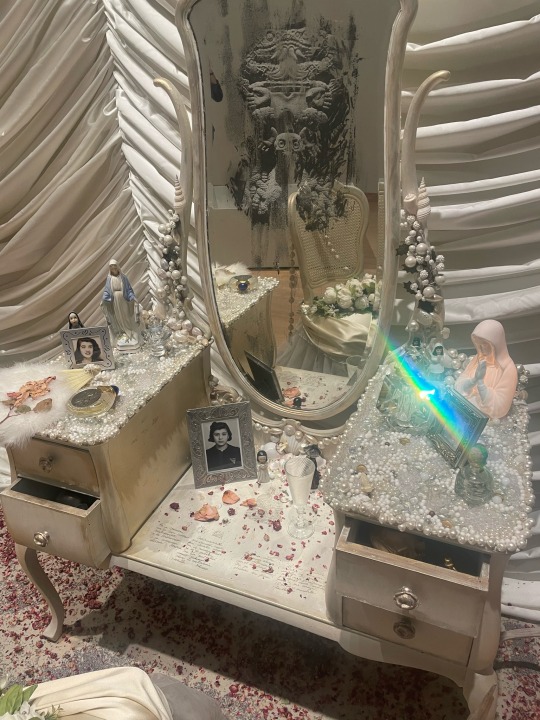#amalia mesa-bains
Text

Transparent Migrations, by Amalia Mesa-Bains.
#amalia mesa-bains#transparent migrations#chicano art#art#whimsical#trinkets#glass#whimsy#whimsigoth#gothic#vanity
16 notes
·
View notes
Text
Honing in on the identity category “woman” also provides examples of intersectional listening, of coalitionally exploring meanings of “woman” in an effort to center the voices and experiences of multiply marginalized members. Listening, as an intentional rhetorical practice, can open space for recognizing both similarities and difference (see Ratcliffe, 2005; Starosta & Chen, 2000). Rather than a passive state, listening in this perspective is an actively engaged practice of co-constructing meaning across differences in identity and culture. One example of this engagement is a 2006 book by artist and Chicana activist Amalia Mesa-Bains and Black feminist writer and activist bell hooks. Formatted as a dialogue, the book presents their ruminations, their experiences, and their wisdom for the explicit purpose of countering simplistic narratives that pit people of color against each other or seek to erase their differences: “We do have differences, but our commonalities are just as strong, and they represent hope for resistance and freedom” (p. 3). This claiming of both difference and commonality, acknowledging the complexities of their own identities and the social groups of which they are a part, reveals how embracing a positional perspective of identity opens space for coalition building. It does so in part by refusing to demand that individuals must hold all perspectives, priorities, or experiences in common to join a coalition.
Rebecca Walton, Kristen Moore, and Natasha Jones, from Chapter 3 of Technical Communication After the Social Justice Turn: Building Coalitions for Action (2019)
#rebecca walton#kristen moore#natasha jones#readings#bell hooks#amalia mesa-bains#difference as power#TC#quotations
3 notes
·
View notes
Text
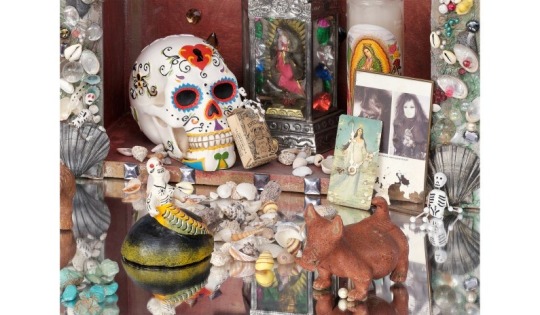
Amalia Mesa-Bains, Queen of the Waters, Mother of the Land of the Dead: Homenaje a Tonatzin/Guadalupe, 1992, mixed-media installation including fabric drape, six jeweled clocks, mirror pedestals with grottos, nicho box, found objects, dried flowers, dried pomegranate, and potpourri.
Courtesy of the artist and Rena Bransten Gallery, San Francisco
0 notes
Photo
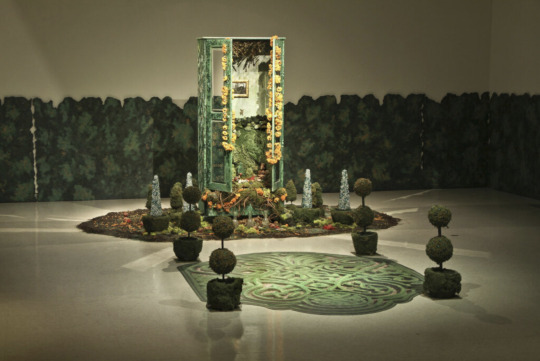

Amalia Mesa-Bains, Private Landscapes/Public Territories, 1996
63 notes
·
View notes
Text
(pt. 3) Notes on US Latinx art Forum
Institutions
1. Inter-University Program for Latino Research (IUPLR)
Pamela Anne Quiroz, Ph.D.
Executive Director, IUPLR
Director, Center for Mexican American Studies, University of Houston
it was my first time hearing of this IUPLR program.
2. BAMPFA - UC Berkeley Art Museum and Pacific Film Archive
“premier visual arts venue at the top U.S. public research university...”
- Holds more than 28,000 works of art, specifically from 20th - 21st century work.
- Founded in 1970, relocated in 2016.
3. The Latinx Project
https://www.latinxproject.nyu.edu/
Notes to Self
ARCHIVE LATINE ART - M.A
“WHAT IS THE DNA OF MY ARCHIVE” - AMALIA MESA-BAINS
“will Latinx art be taught under American art at universities?” - panelist
AMERICAN ART
LATIN AMERICAN ART
LATINX ART
7 notes
·
View notes
Text
El Museo Del Barrio Presents Amalia Mesa-Bains: Archaeology of Memory
Amalia Mesa-Bains, Venus Envy Chapter I: First Holy Communion, Moments Before the End (detail), 1993/2022. mixed-media installation including fabric, photographs, clothing, found objects, mementos, mirrors, found furniture, sand, dried petals, candles, laser prints on wall, pearls, and found images, 240 × 120 × 72 inches (609.6 × 304.8 × 182.88 cm). San Francisco Museum of Modern Art. Courtesy of…
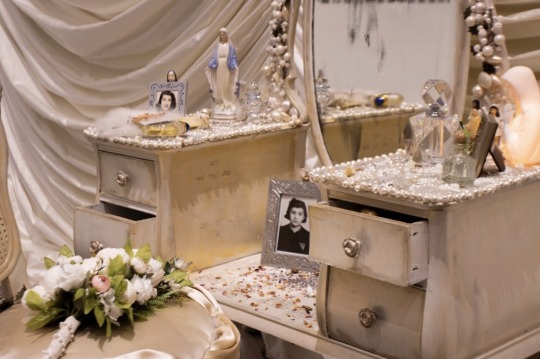
View On WordPress
0 notes
Text
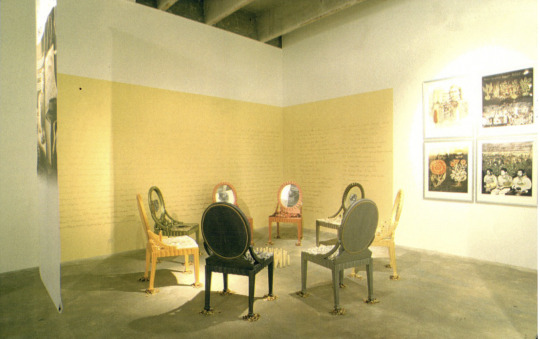
Amalia Mesa-Bains, Circle of Ancestors, 1996, 7 chairs embellished with beads, gold leafing and mirror, Dimensions variable. Installation view: Hall of History in El Fin del Siglo: The Latina Worlds Fair, Bernice Steinbaum Gallery, 2000, Miami Florida.
https://towardcommoncause.org/artists/amalia-mesa-bains/
"Her work contemplates the meanings of multiculturalism as well as demographic shifts in today’s climate within the United States, building off of her own Mexican heritage. Each piece is in some form an exploration of her own Chicana identity seen through both an artistic and psychological perspective."
By offering unique aspects of her experiences and identities, she adds to a growing archive telling the perspectives of life in the U.S. as a Chicana woman. Narratives like this have historically been ignored, and by creating art that highlights the experiences of these individuals, it battles the forced erasure and assimilation placed on Mexican Americans.
0 notes
Text
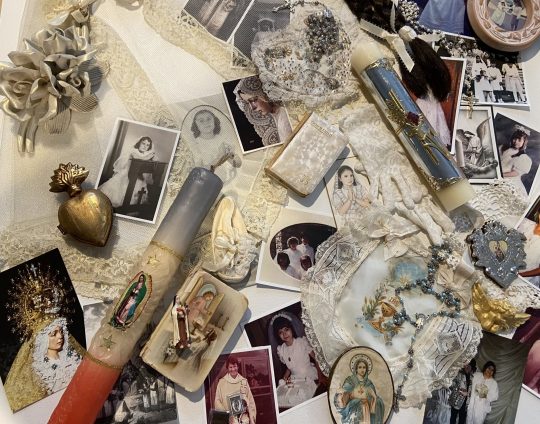
Detail of Venus Envy Chapter I, by Amalia Mesa-Bains.
#amalia mesa-bains#venus envy#chicano art#catholic#catholic core#arte latinoamericano#vintage inspo#virgin mary#virgen maria#religious imagery#christianity#christian imagery#religious art#satin and lace#ethereal lace#coquette#whimsical
3 notes
·
View notes
Text
Famed Bay Area Chicana artist Amalia Mesa-Bains gets first retrospective show in Berkeley — Content Hub
Pioneering Bay Area artist Amalia Mesa-Bains’ evocative ‘altar installations’ at the Berkeley Art Museum explore feminist themes and Chicana culture.
Famed Bay Area Chicana artist Amalia Mesa-Bains gets first retrospective show in Berkeley — Content Hub
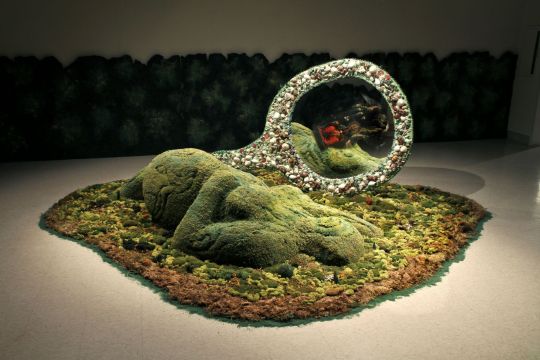
View On WordPress
0 notes
Photo
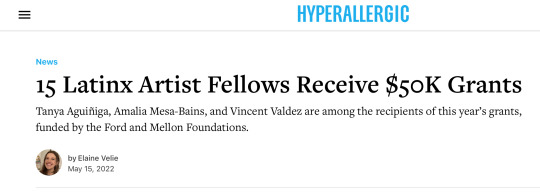

15 Latinx Artist Fellows Receive $50K Grants
Sprig 2022 Visiting Artist Tanya Aguiñiga and VPA Faculty Emerita, Amalia Mesa-Bains are among the recipients of this year’s grants, funded by the Ford and Mellon Foundations.
Read full article here.
0 notes
Photo
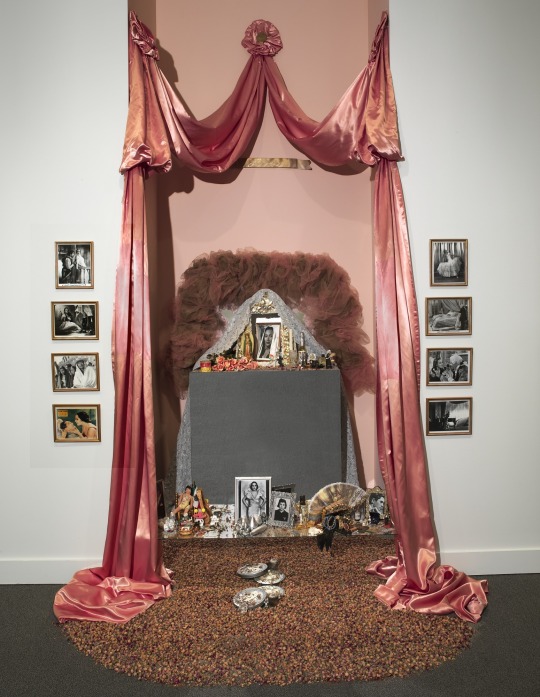
Amalia Mesa-Bains, An Ofrenda for Dolores del Rio, 1984 (revised 1991)
14 notes
·
View notes
Photo
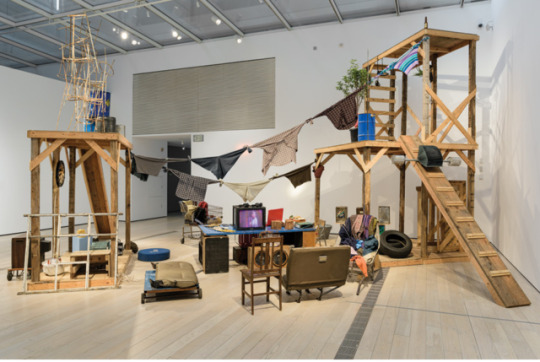
WHAT’S ON: Home—So Different, So Appealing. June 11, 2017 - October 15, 2017. Los Angeles County Museum of Art, 5905 Wilshire Blvd, Los Angeles, CA 90036.
Abraham Cruzvillegas, Autoconstrucción, 2010. Installation view, Home—So Different, So Appealing, Los Angeles County Museum of Art, Los Angeles, CA. Courtesy LACMA.
www.sculpture-center.org
This post is part of our Domestic Spaces series.
-ID
#sculpturecenter#sculpturenotebook#2017#installation#what's on#daniel joseph martinez#gordon matta-clark#raphael montañez ortiz#guillermo kuitca#doris salcedo#carmen argote#camilo ontiveros#maria elena gonzalez#Abraham Cruzvillegas#antonio berni#leon ferrari#beatriz gonzález#felix gonzález-torres#amalia mesa-bains#laura aguilar#christina fernandez#ramiro gomez#salomón huerta#lacma#los angeles county museum of art#sculpture
30 notes
·
View notes
Text
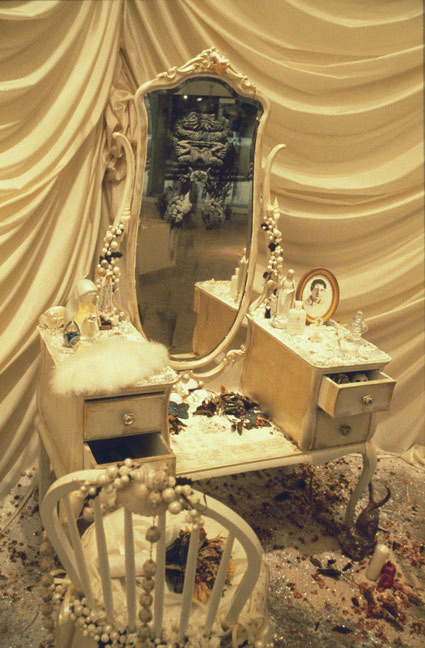
amalia mesa-bains’s installation art
#installation #art
4 notes
·
View notes
Text
Judith F. Baca
(September 20, 1946 - )
Her process as Muralist begins with meetings within the community to source stories. She then consults oral historians, scholars, cultural ethnographers, and, when she can, people who have lived through the events to be depicted.
“She has a way of making people step out of their own struggles into a larger understanding of what constitutes a life,”
said her longtime friend, artist Amalia Mesa-Bains.
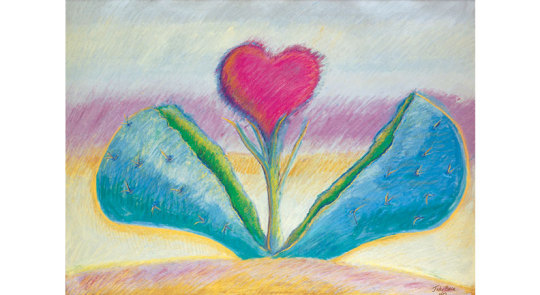
In the 1970s, she became involved with the feminist community around the Woman’s Building, an education and exhibition space near MacArthur Park that took the Virginia Woolf essay “A Room of One’s Own” as its guiding principle.

In 1976, she cofounded the mural-making organization Social and Public Art Resource Center (SPARC).
The Great Wall of Los Angeles
She worked with the community on The Great Wall of Los Angeles. Begun in the late 1970s and still in progress, it is the longerst mural in the world, measuring more than a half mile long.
“If you can disappear a river, how much easier is it to disappear the history of a people?”

Baca was a woman, a Chicana, and a lesbian, at a time when the first two were thought of as mutually exclusive identities, and the third was not discussed at all.
“Judy calls herself a bridge, Professor of Latin American and Latinx Art Anna Indych-López said, “She claimed a space for women of color within feminism, and a space for feminism within Chicano and Chicana art.”

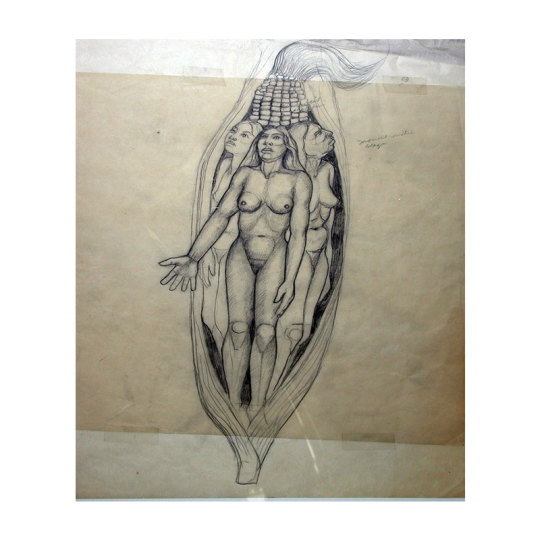
“She’s not trying to replace one canon with another, but in a way she’s visualizing history as a process of contestation in and of itself.”
Durón, Maximilíano. “Chicana Muralist Judith F. Baca Tells the Stories of California – ARTnews.Com.” ARTnews.Com, ARTnews.com, 19 Apr. 2017, https://www.artnews.com/artnews/news/concrete-history-chicana-muralist-judith-f-baca-goes-from-the-great-wall-to-the-museum-wall-8143/.
#Judith F. Baca#Judith Baca#The Great Wall of Los Angeles#american contemporary lesbian art#American lesbian artists#mural art#the Woman’s Building#1970s#lesbian art & artists#lesbian art and artists
1 note
·
View note
